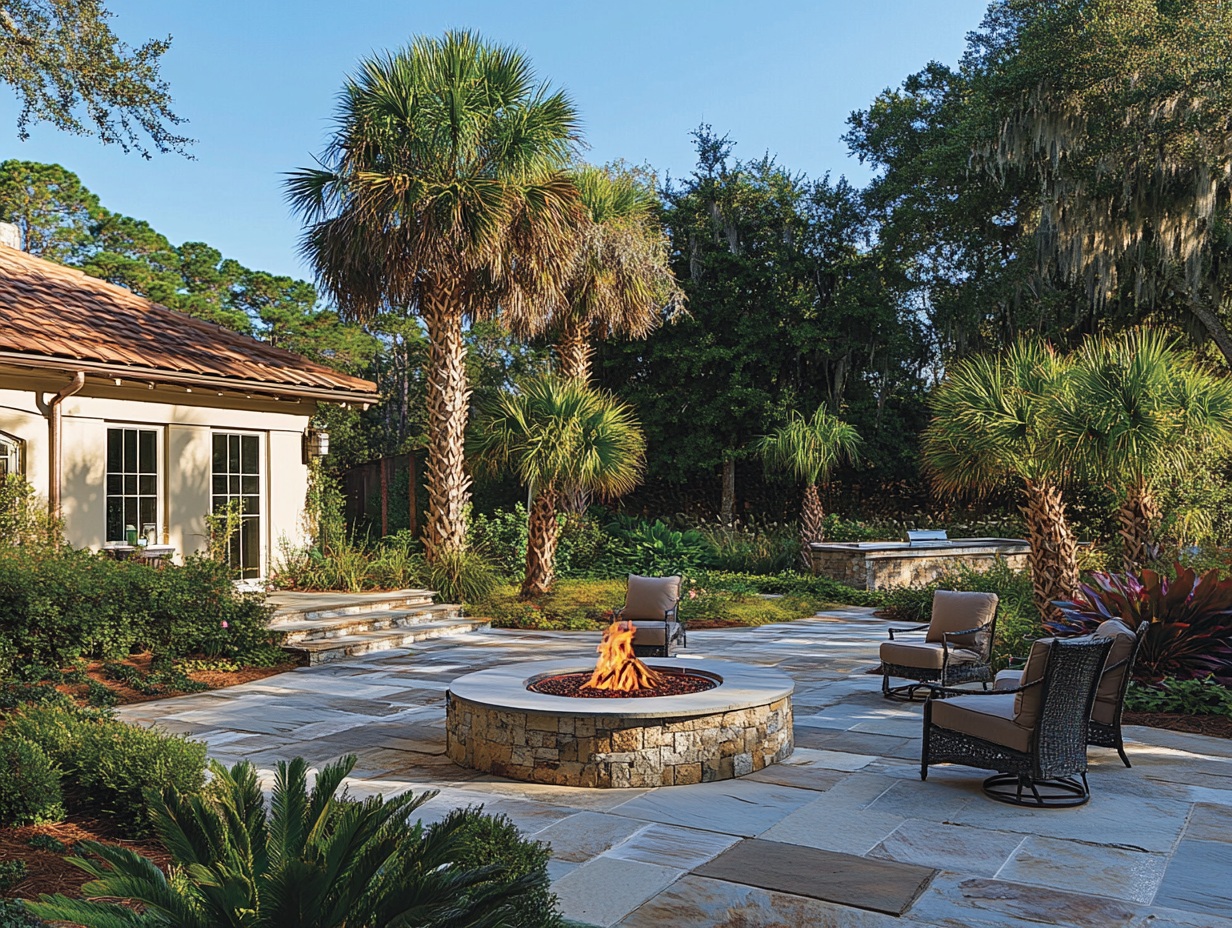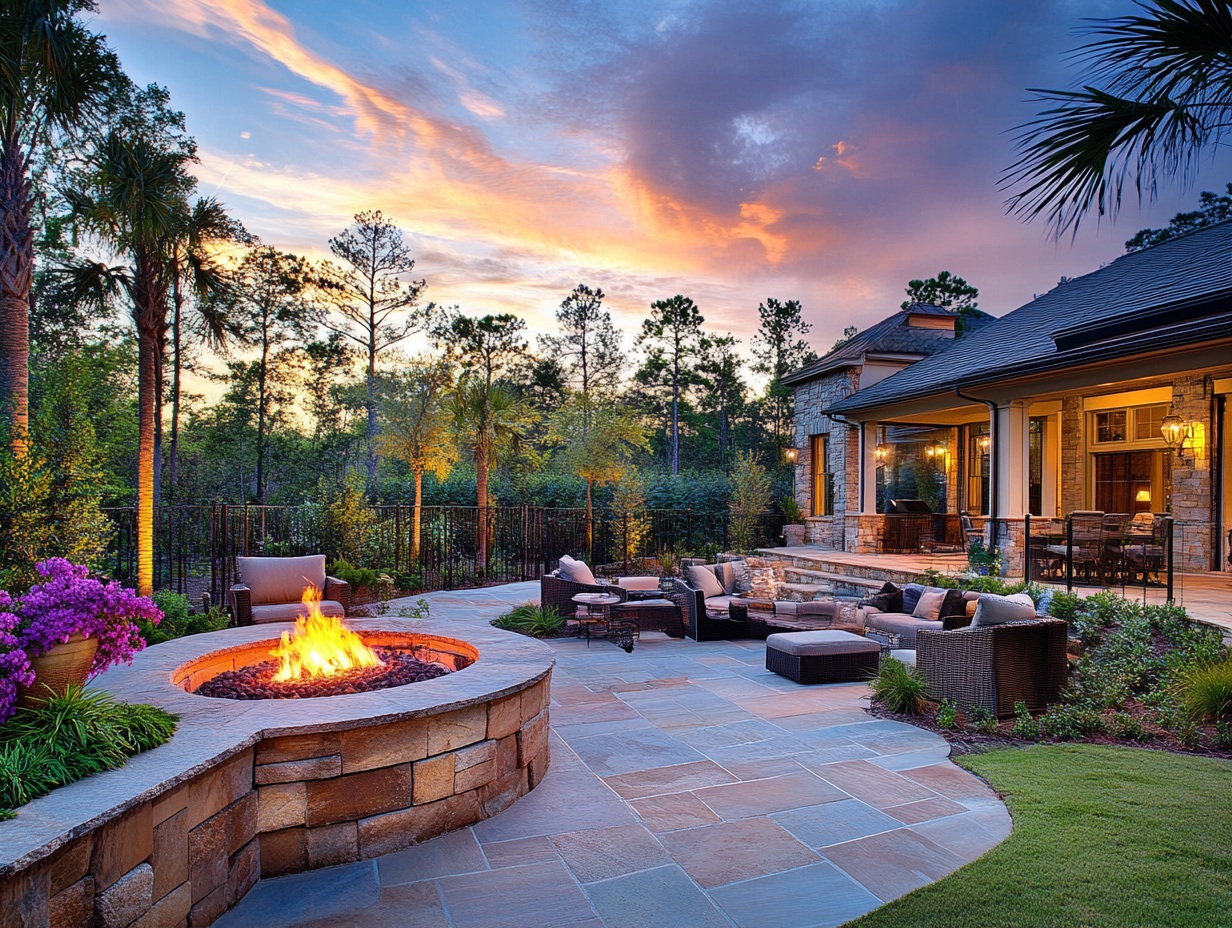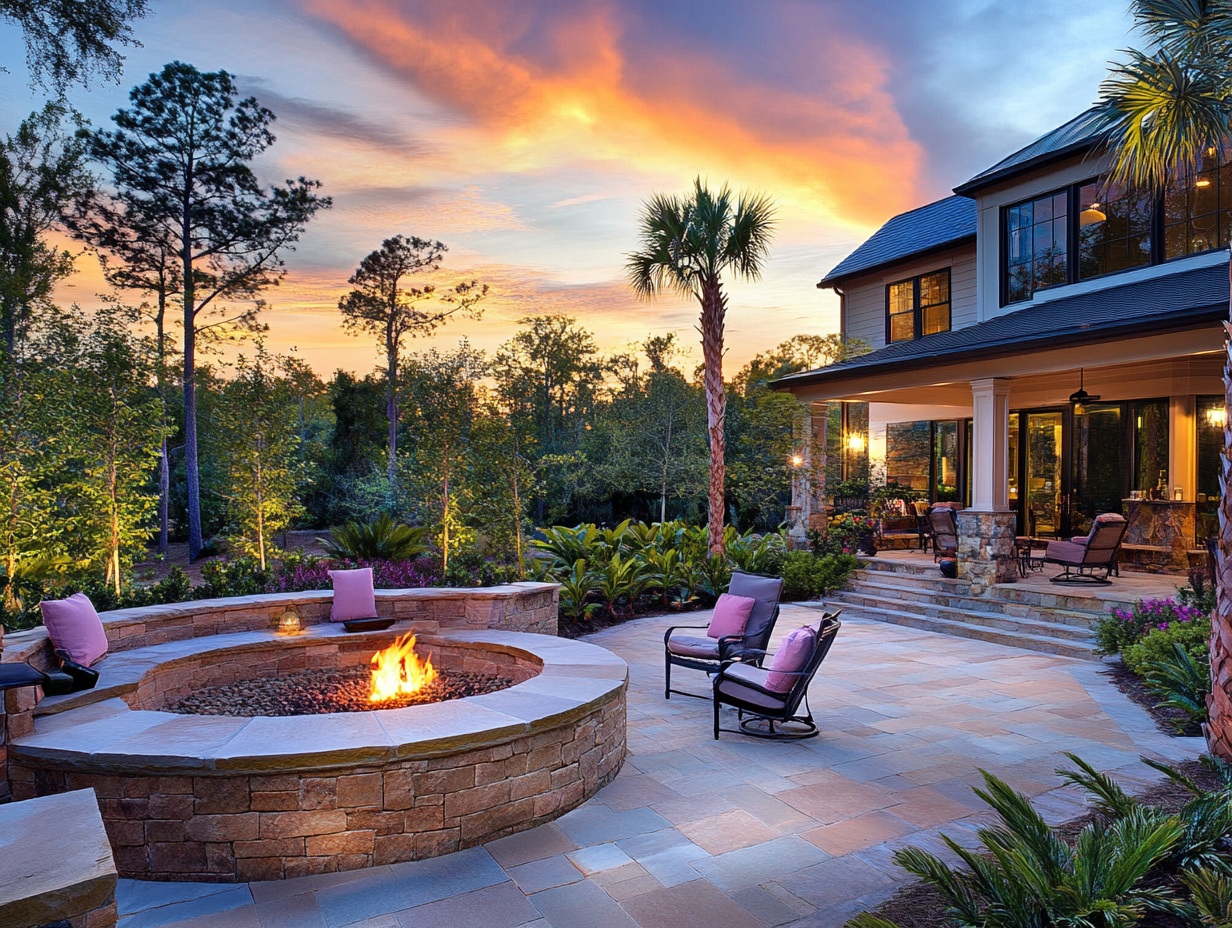Investing in your outdoor space through thoughtful landscaping and hardscaping not only enhances your property’s aesthetic appeal but also its functionality and value. While landscaping involves the cultivation of plants and greenery, hardscaping focuses on the non-living elements such as patios, walkways, retaining walls, and other structures that provide form and utility to your outdoor environment. Embarking on a hardscaping project is a significant commitment that requires careful planning and consideration to ensure the outcome aligns with your vision and serves your needs effectively.
Before breaking ground, it’s crucial to ask yourself a series of essential questions that will guide the planning and execution of your hardscaping project. These inquiries will help you define the project’s scope, select appropriate materials, understand local regulations, and ultimately achieve a durable and aesthetically pleasing result.
1. What is the Scope of the Project?
Clearly defining the scope of your hardscaping project is the foundational step in the planning process. Consider the following aspects:
-
Objectives and Goals: Determine what you aim to achieve with the project. Are you looking to create a new outdoor living area, enhance curb appeal, address erosion issues, or install functional features like walkways and retaining walls?
-
Project Scale: Assess the size and complexity of the project. Will it involve a simple addition like a stone pathway, or is it a comprehensive overhaul of your backyard with multiple elements such as patios, fire pits, and water features?
-
Budget Constraints: Establish a realistic budget that encompasses all aspects of the project, including materials, labor, permits, and contingencies.
-
Timeline: Consider any time constraints or deadlines. Do you have a specific date by which you’d like the project completed, perhaps to enjoy during a particular season or before hosting an event?
By thoroughly evaluating these factors, you can develop a clear and actionable plan that aligns with your vision and resources.

2. What Materials are Best Suited for the Local Climate?
Selecting the right materials is pivotal to the longevity and maintenance of your hardscaping features, especially in regions like South Carolina, where the climate presents specific challenges. Consider the following materials:
-
Porcelain Pavers: Ideal for areas with high temperatures and humidity, porcelain pavers have a low water absorption rate, making them resistant to cracking and color fading. Their durability suits the hot and humid conditions prevalent in South Carolina.
-
Concrete Pavers: Cost-effective and versatile, concrete pavers perform well in various climates. Opting for light-colored concrete can help deflect sunlight and retain less heat, which is beneficial during South Carolina’s hot summers.
-
Natural Stone Pavers: Materials like granite or bluestone offer excellent durability and can withstand harsh weather conditions. However, they may require maintenance to prevent issues like mold and mildew growth due to the region’s humidity.
-
Brick Pavers: While aesthetically pleasing and made from natural materials, brick pavers may lose color over time due to sun exposure. They are durable but might require more maintenance compared to other materials.
Understanding the properties of each material and their performance in your local climate will help you make informed decisions that balance aesthetics, durability, and maintenance requirements.
3. Are There Any Permitting Requirements?
Navigating local regulations is a critical aspect of planning your hardscaping project. Consider the following steps:
-
Research Local Codes: Investigate municipal codes and zoning laws in your area to understand what is permissible. Some regions have specific guidelines regarding the types of structures you can build, their placement, and their size.
-
Homeowners Association (HOA) Guidelines: If your property is within an HOA jurisdiction, review their rules and obtain necessary approvals before commencing work. HOAs often have aesthetic and structural guidelines to maintain community standards.
-
Permit Acquisition: Determine which aspects of your project require permits. Common elements that may need approval include retaining walls over a certain height, decks, and extensive drainage modifications. Contact your local building department to obtain the necessary permits and ensure compliance.
-
Environmental Considerations: Be aware of any environmental regulations, especially if your property is near protected areas, wetlands, or bodies of water.
Ensuring all legal and regulatory requirements are met will prevent potential fines, project delays, and the need for costly alterations in the future.

4. What is My Maintenance Plan?
Understanding the upkeep required for your hardscaping features is essential for their longevity and continued aesthetic appeal. Consider the following:
-
Material Maintenance: Different materials have varying maintenance needs. For instance, natural stone may require sealing to prevent staining, while concrete pavers might need periodic cleaning to avoid discoloration.
-
Seasonal Care: Develop a maintenance schedule that accounts for seasonal changes. In South Carolina, this might include preparing for hot summers by ensuring materials can withstand heat and humidity, as well as mild winters that may still affect certain materials.
-
Landscaping Integration: Consider how your hardscaping integrates with softscaping elements. Proper planning can reduce maintenance by selecting native plants that require less water and are adapted to the local climate.
-
Long-Term Durability: Investing in quality materials and professional installation can reduce long-term maintenance efforts and costs.
A well-thought-out maintenance plan ensures your hardscaping remains functional and visually appealing for years to come.
Embarking on a hardscaping project is an exciting endeavor that can transform your outdoor space into a functional and beautiful extension of your home. By asking these essential questions—defining the project’s scope, selecting climate-appropriate materials, understanding permitting requirements, and planning for maintenance—you lay the groundwork for a successful project that meets your needs and enhances your property’s value.

